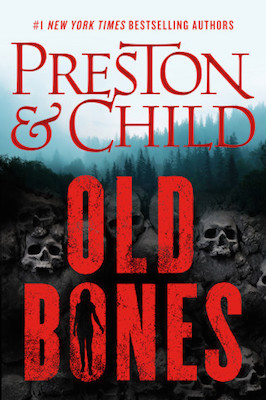
“I first heard the story of the Donner Party as a young boy growing up outside San Francisco,” Benton began. “I mentioned to you that my family—my mother’s family—are collateral descendants of the Breen family, who were part of the Donner group. My mother told me the story as a child and I was hooked. It led me into historical studies and eventually a PhD from Stanford.
“The Donner catastrophe was one of the greatest calamities of the westward migration. Here was a group of emigrants who set out to civilize an untamed land—California—but in the process ended up reduced to unspeakable barbarity. It was the American Dream turned inside out.
“The two main characters in the drama were George Donner and his wife, Tamzene. George was a big man with a hunger for land. All his life, he wanted more of it—for farming. His wife was a schoolmarm. She was small and slender, with the manners and education of a lady. But underneath was a woman with an ironbound sense of right and wrong. The two had three daughters together, and George had two other daughters from a previous marriage.
“In 1846, California was still part of Mexico. But war was brewing, and everyone expected the U.S. would soon grab the territory. Donner saw an opportunity to get in on the ground floor, so to speak, and get his hands on some of that rich new land. He was a good talker and he drew his brother, Jacob, and Jacob’s family into his vision.
“These were not ragtag settlers: they had money. This was a caravan of well-heeled, even wealthy, pioneers stocked with the best of everything.”“George, Tamzene, and their five young daughters left Independence, Missouri, in the spring of 1846, with a large group of other emigrants. These were not ragtag settlers: they had money. This was a caravan of well-heeled, even wealthy, pioneers stocked with the best of everything. Tamzene planned to start a ladies’ school and had brought books, school supplies, slates and chalk, religious pamphlets and Bibles, even oil and watercolor paints. George had loaded a wagon with bolts of velvet, silks, and satins to sell at high profit to the Californios. Some people carried sums of money with them. A man named Jacob Wolfinger, for example, carried a lockbox containing gold with which he intended to buy land, build a house, and start a business.
“The fact is, aside from their wealth, this was pretty much a normal emigrant wagon train heading west. It would have been forgotten to history except for one thing: a fateful decision they made along the trail. In Wyoming, Donner and the others decided to take a shortcut. It was called the Hastings Cutoff, which was being talked up at the time by a promoter named Lansford Hastings. Donner and about ninety souls voted to take the cutoff. The rest of the emigrant train voted to continue on the regular route.
“So they split up. The Donner Party went southwest into Utah, following the cutoff. The new trail took them through the rugged Wasatch Mountains. Donner and the rest began to realize something was wrong when the mountains turned out to be far worse than Hastings had described. But it was too late to turn around. Once out of the mountains, they were forced to cross the Great Salt Lake Desert. As they struggled on, they began to suffer terribly from lack of water. Some of the children were given flattened bullets to suck on, to relieve their desperate thirst. They ran low on food. Things started to fall apart. Arguments flared up. Indians stole some oxen and shot others full of arrows. Several travelers were also hit—potshots taken from behind rocks and trees—resulting in wounds. Another man, who became unable to walk, was put out of his wagon and left to die by the trail. And all this time, Tamzene Donner kept a careful record of events in her journal.
“As they were crossing the Nevada desert, Wolfinger’s wagon became mired. The rest of the train continued on while he stayed behind to dig it out. Soon afterward, two men named Reinhardt and Spitzer volunteered to go back and help Wolfinger. They were gone a few days. When they later caught up with the wagon train, they explained that they’d been attacked by Indians and that Wolfinger had been killed.
“By the time the emigrants reached the foothills of the Sierras in late October, they were badly behind schedule and already starving. But the mountains were still free of snow, and they hoped to hurry across before winter arrived in earnest.
“They almost made it. Less than a day’s travel from the top of the pass, a sudden blizzard buried them. At the time, the pack train was strung out along the mountain trail. The blizzard literally froze everyone in their tracks—and there they would remain. Fifty-nine people in the vanguard were caught near Truckee Lake and forced to hunker down. Another twenty-two, including George and Tamzene and their five little daughters, were stuck six miles back in a meadow by Alder Creek. These two camps have been found and excavated by archaeologists.
“But the historical record mentions a third camp—usually referred to now as the ‘Lost Camp.’ It was a small group in the rear, consisting in part of Reinhardt and Spitzer, a family named Carville, and one Albert Parkin, who deserted his family to seek a new life in California. Nobody is sure what happened but it’s likely that, in the confusion of the snowstorm, this group lost the trail and went up a dead-end canyon beyond the mouth of the Little Truckee River. They ended up snowbound deep in the mountains, miles from the main party. Some said the Lost Camp was located in a dark valley, cut off from the sun, encircled by rocky cliffs. So many legends have grown up about the camp that it’s hard to tease out the truth.
“At any rate, all the stranded travelers remained snowbound for months, as storm after storm dumped twenty-five to thirty feet of snow on them. It buried the rough lean-tos and crude shelters they had managed to cobble together. In these filthy hovels, they huddled and starved and began to die, one by one. They ate the last of their supplies. Then they ate their oxen and horses. Then they ate their dogs. And then they started digging up the frozen bodies of their companions.
“They peeled off the flesh and cooked it. They went for the organs, eating the livers and hearts, intestines and lungs. They cracked the bones for marrow and split open the skulls for the brains. When all that ran out, they boiled the bones for grease.”
Benton took a moment to shift in his chair and glance at the distant horizon. Nora and Salazar were silent.
“In desperation, a group of fifteen men finally set off to cross the mountains into California to summon help. Seven made it—and then only by eating their companions who had died along the way.”“I should add that not everyone partook. Many refused to eat human flesh. Even today, historians debate just how many of the party became cannibals. As more died of starvation, it meant more food became available for those left alive. It’s al- most impossible to imagine what it must have been like, day after day, week after week, stuck in those dreadful camps, over- crowded with men, women, and children in stuffy dens, where the air was so foul from fecal waste and rotting human flesh that it could hardly be breathed. In desperation, a group of fifteen men finally set off to cross the mountains into California to summon help. Seven made it—and then only by eating their companions who had died along the way.
“In February, the first relief expedition arrived. They saw scenes of horror that almost defy comprehension. One rescuer later described coming across some children sitting on a log, their faces smeared with blood as they ate the half-roasted liver and heart of their own father, body parts scattered around them.
“That first rescue expedition could only save a few: they themselves almost starved to death crossing the Sierras to reach the stranded travelers. Tamzene and George Donner were still alive when the first relief party arrived, but Tamzene refused to leave her husband, who was dying of a hand infection. A second rescue expedition brought additional people out of the mountains, and a third, but Tamzene refused to leave her dying George, even while her own children were carried out.
“At some point during all this, a man named Asher Boardman showed up Donner camp at Alder Creek. It was at the end of February. He had fled the Lost Camp, and alluded to how the place had descended into a kind of cannibalistic madness. Board- man was an itinerant preacher and said he’d run away when his own wife, Edith, tried to kill and eat him. Boardman ended up dying of starvation and exhaustion a few days later, about the time the third rescue expedition arrived.
“All this and much more Tamzene recorded in her journal.
“Finally, in April, the fourth and final relief effort arrived. But in the aftermath of the third rescue expedition, many more had died and the cannibalism had actually accelerated. What those last rescuers found was even more shocking than what had come before. In the Alder Creek camp, they found no one alive. George Donner was dead, his body lying in the melting snow, butchered and partially dismembered, his head split open and brains removed. There was, however, no sign of Tamzene. The rescuers went on to rude campsite nearby, where they found a single living man named Keseberg. Next to him was a frying pan with a human liver and lungs in it. Under pointed questioning, he admitted they were the remains of Tamzene. He had been eating her body for weeks, he said, and the liver and lungs were all that was left.
“The story of the Donner Party became a tale for the ages, retold, reprinted, and sensationalized until it was almost unrecognizable. It has never ceased to fascinate.”“At any rate, that final relief expedition brought out the last of the survivors. The story of the Donner Party became a tale for the ages, retold, reprinted, and sensationalized until it was almost unrecognizable. It has never ceased to fascinate.
“Which brings me to why I’m here. As I mentioned, two primary campsites were identified—the camp near Truckee Lake and the one along Alder Creek. But the Lost Camp has never been found. It was visited by only one member of the third search party. We don’t know many details of what he found there, but we do know that after witnessing it he refused to go back. Bad as the two main camps were, what happened in the Lost Camp was apparently worse—much worse. The rescuer found only one survivor in that camp, and brought him out, but he died raving not long afterward.
“The elusive stories about the Lost Camp haunted me. For half a dozen years I searched, following one dead end, one false lead after another . . . until I dedicated myself to finding Tamzene’s diary. Of course, there were plenty of sensational newspaper stories, letters, secondhand accounts of dubious accuracy—but this crucial primary source had been lost for almost two centuries. Everyone believed it must have been left behind, just so much mulch rotting into the forest floor. Thinking it was lost, nobody undertook a systematic search for it. I’ll spare you the details, but my patience was finally rewarded in not one but two ways. First, I managed to find the journal— just in the nick of time. And second: it includes not only a list of everyone who was stranded at the Lost Camp, but directions to it as well. Asher Boardman, the man who escaped the Lost Camp, shared information about it with Tamzene before he died. Beyond that, her journal contains notes with land-marks, and a hand-drawn map showing the locations of all three camps. The Lost Camp may have a particularly infamous reputation—and the horrors that occurred there may never be fully known—but we now have a road map to it.”’
Benton paused again, leaning forward. “And that’s the job I’m offering you: to lead an expedition to find the Lost Camp.”
__________________________________
From Old Bones by Douglas Preston and Lincoln Child. Used with the permission of the publisher, Grand Central. Copyright © 2015 by Douglas Preston and Lincoln Child (usually).


